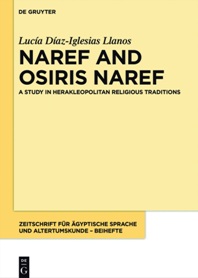| Main » Ad Board » ДРЕВЕН ЕГИПЕТ И АФРИКА » Религия и философия |
| 25.05.2019, 20:04 | |
Монография за локалния култ към Озирис, популярен в древноегипетския 20-ти ном на Горен Египет с център Хераклеополис, наричан в древността Нареф.
АЛТЕРНАТИВЕН ЛИНК / ALTERNATIVE LINK: - на английски език, от Google Docs,формат PDF. Сваляне с ляв бутон (downloading by left button) от страницата на предоставящия сървър, после през бутона стрелка надолу/after by down arrow button. - на английски език, от MEGA, формат EPUB. Сваляне с ляв бутон (downloading by left button) и после през бутона Download.
| |
| Views: 916 | Placed till: 25.11.2024 | Rating: 0.0/0 | |

